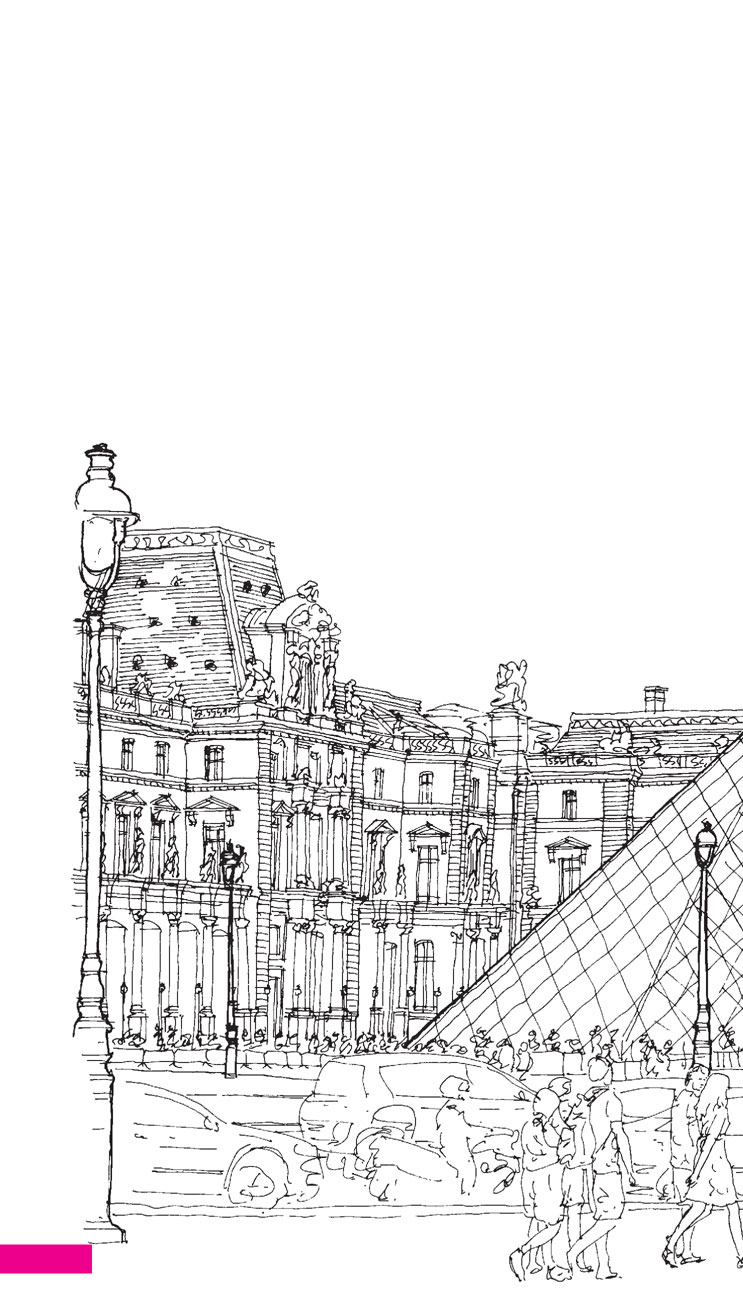royal palace that contains numerous courtyards and overlooks the Seine on its south side. It also acts as the focal point of the magnificent axis that runs from La Défense through the Arc de Triomphe and along the Champs-Elysées. Actually it sits a little off kilter because the axis was originally focused on the Tuileries Palace, which burnt down during the Paris Commune of 1871.
The Louvre was first constructed as a fortress by King Philippe-Auguste in 1190 to protect against Viking raids. François I then gave it a Renaissance facelift. Louis XIV and Napoleon III are mainly responsible for the building’s appearance today, with one key modern exception: I. M. Pei’s iconic glass pyramid which sits in the main courtyard and acts as the museum’s entrance. The museum’s east front contains a stately loggia of twinned fluted Corinthian columns designed by Claude Perrault, who along with Louis Le Vau worked on the Louvre in the mid-17th century. The rest of the building bears the unmistakable stamp of the mid-19th-century eclecticism of Napoleon III’s
64

